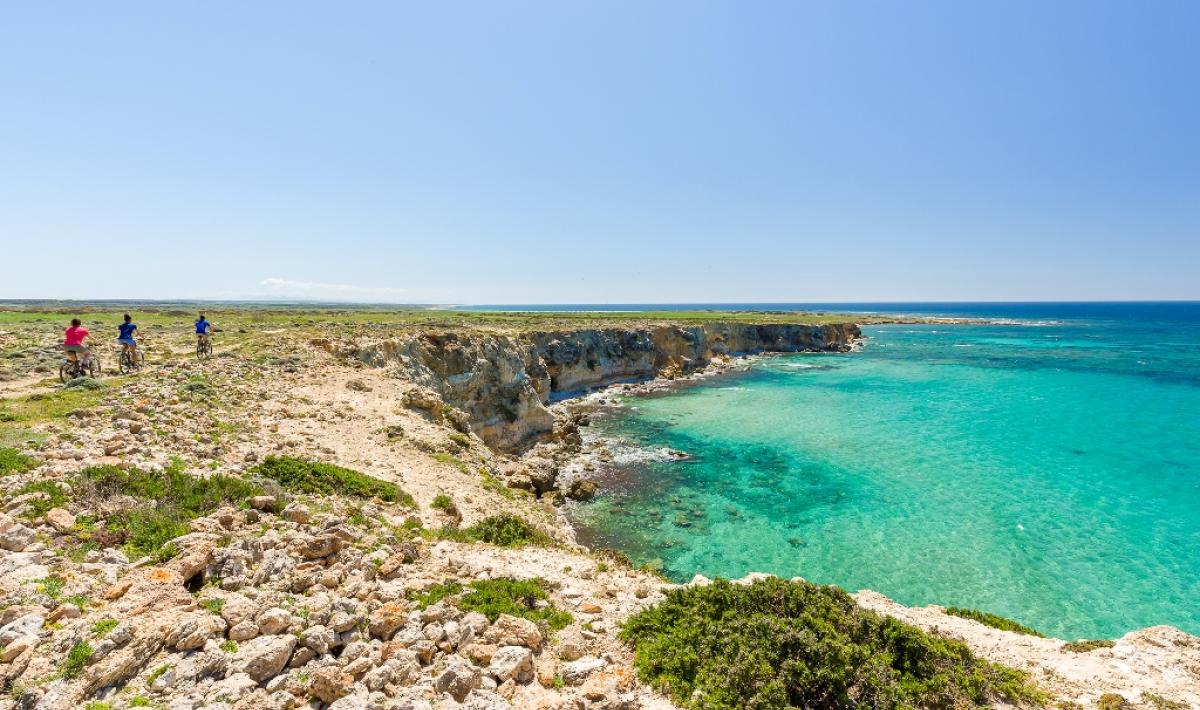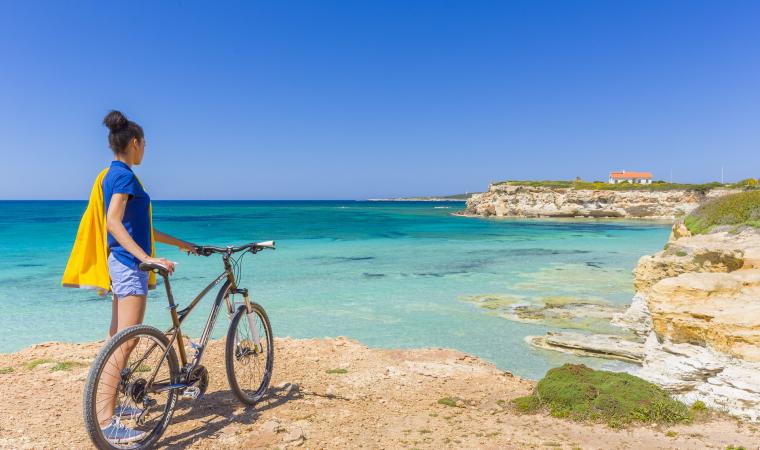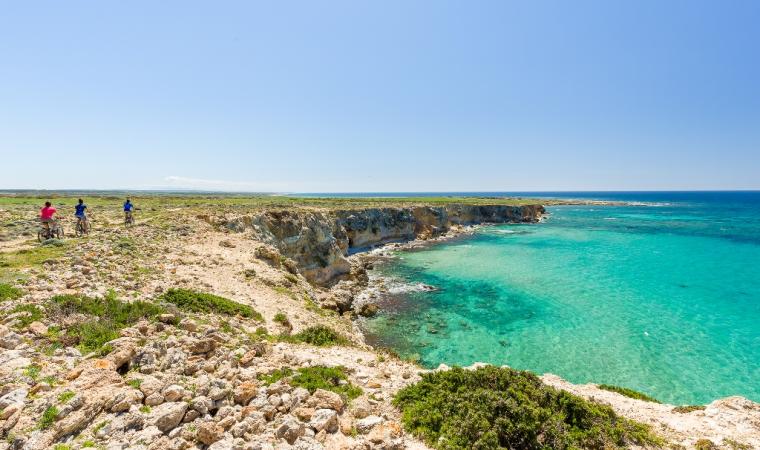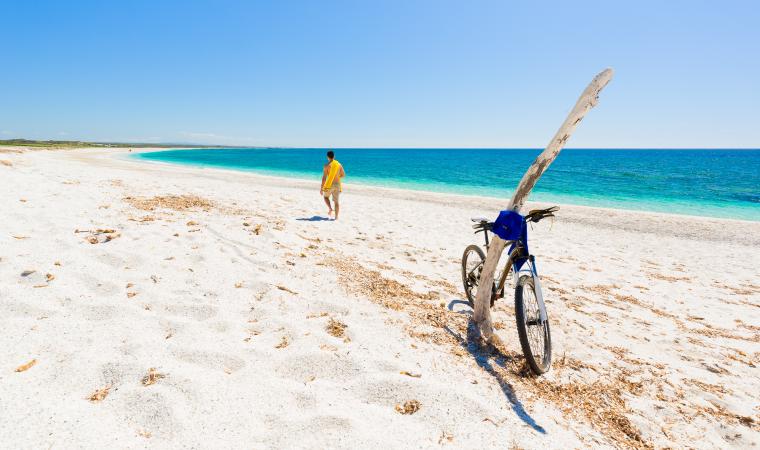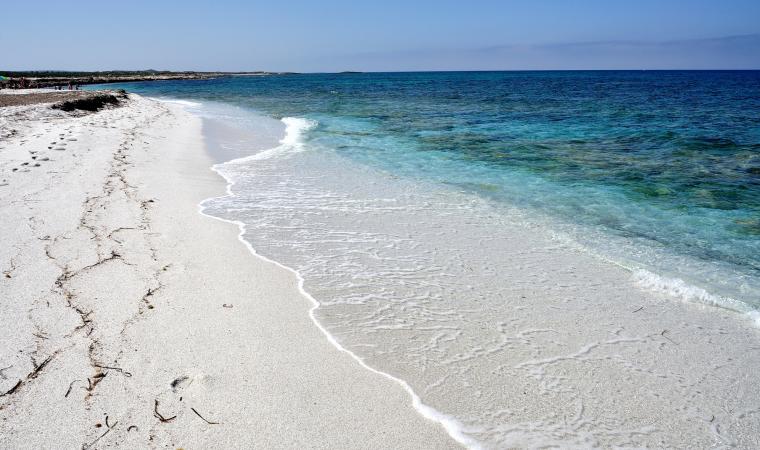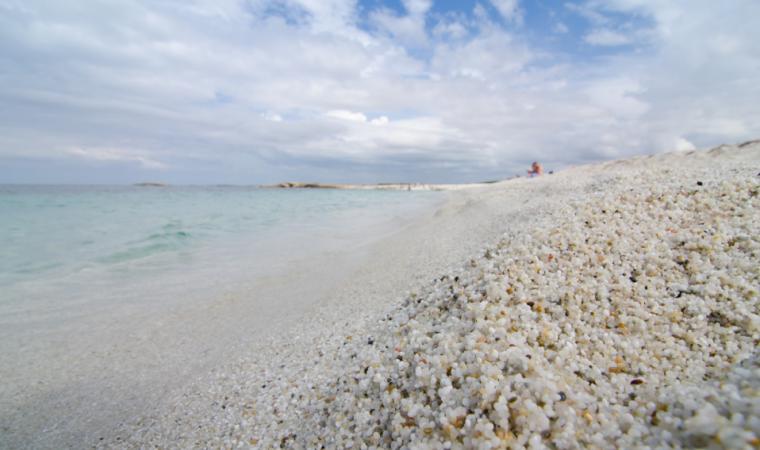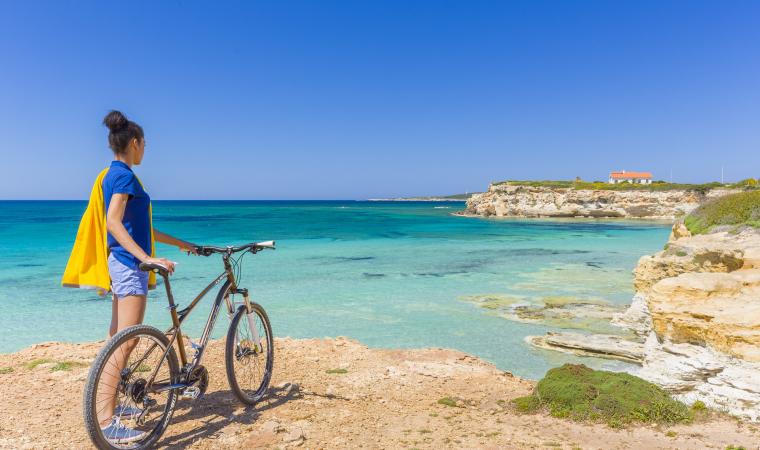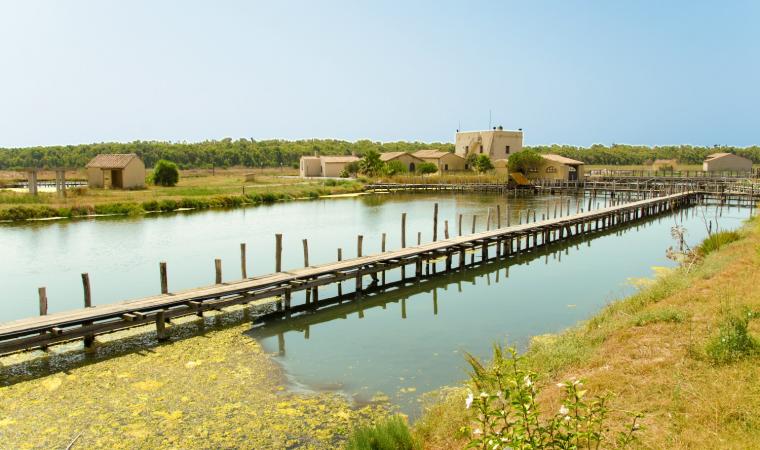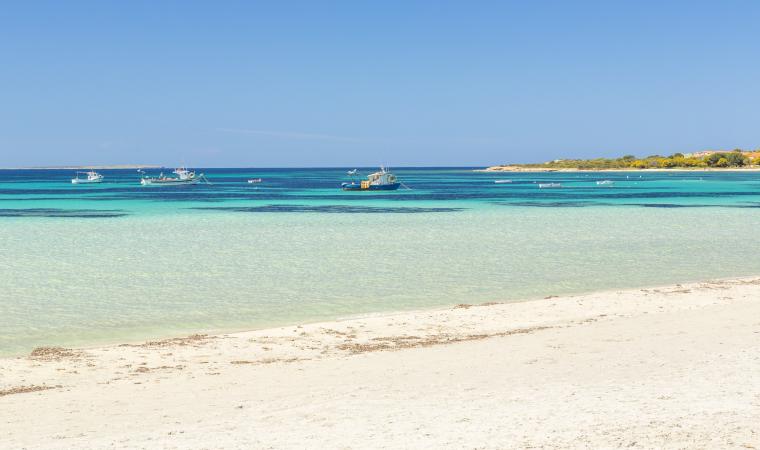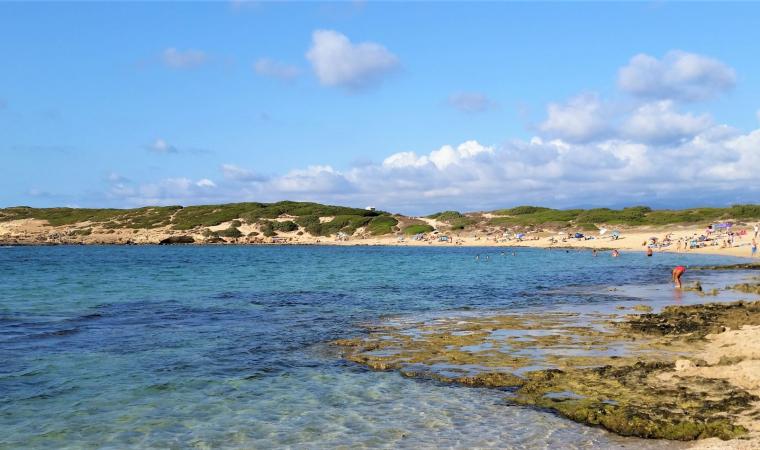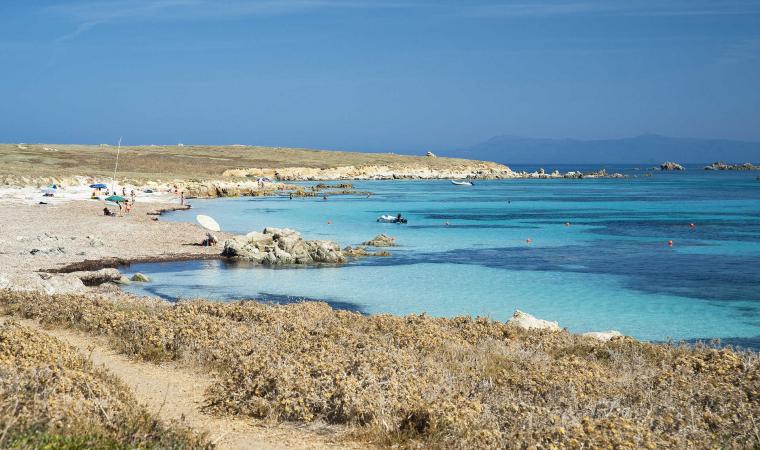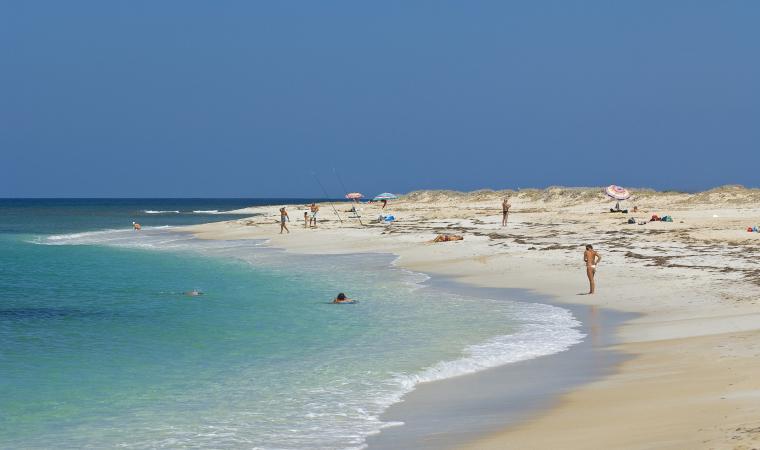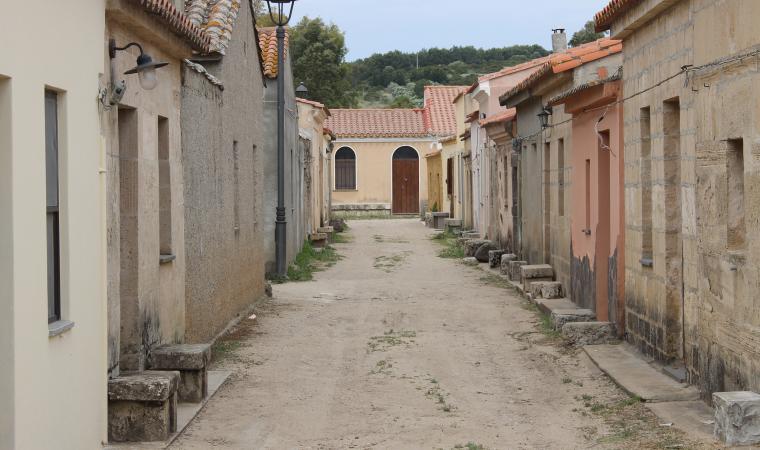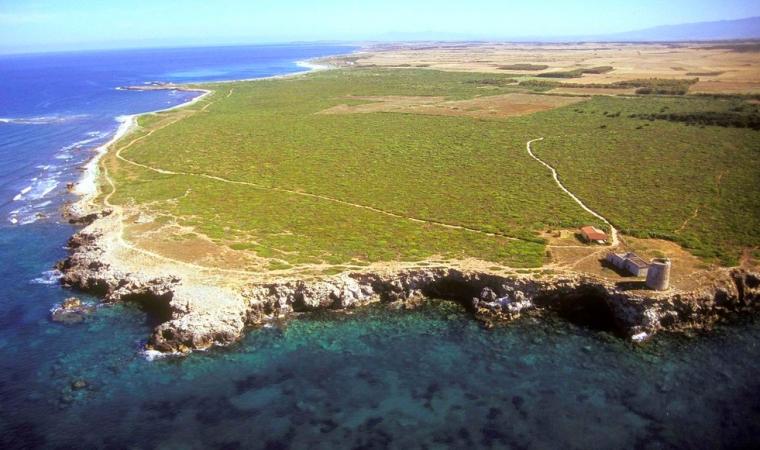Two kilometres of white cliffs shaped by the northwesterly ‘maestrale’ wind and coastal storms, when the waves reach heights of 25 metres: from the top of the cliffs, you can admire the breathtaking views of the western coast of the Island. The cliff of su Tingiosu stretches between capo sa Sturaggia, the northern limit of the beach of Mari Ermi, and the cliffs of su Cantaru, just south of the seaside village of s’Arena Scoada. A path for trekking and mountain bike riding allows you to travel along the entire coastline between the two beaches, connecting the territory of Cabras and that of San Vero Milis: here, the sea takes on shimmering shades of turquoise and green, in some places speckled thanks to the play of colours that the sun’s rays create with the rocky outcrops and the rocks lying on the seabed. In front, on the horizon, you can clearly distinguish the outline of the island of Mal di Ventre, an integral part of the protected area of the Sinis peninsula. At sunset, when the sun hides behind the sea, the colours reflecting on the white limestone, on the rocks and on the water are magical.
Cormorants have established their habitat amidst the ravines of the cliffs and, in the late afternoon, birdwatching enthusiasts can watch as the birds return from their daily hunting. Another curious phenomenon characterises the cliff: the fresh water springs that gush from the rocks, with rivulets flowing along the rocky walls ending directly in the sea. At the foot of su Tingiosu there are various coves, which can be reached by sea, with golden sand mixed with pebbles and with a predominantly rocky seabed. The motion of the waves over time has carved some partially or entirely submerged caves, rich in fish fauna, a destination for diving. The hinterland varies between cultivated fields and shrubs of Mediterranean scrub, species of lentisk, broom and fragrant expanses of helichrysum and rosemary. The name of the cliff may come from the way the inhabitants of the area considered the surrounding environment: Tignosu, meaning poor.
Quartz crystals are what makes the ‘pearls’ of Cabras stand out south of su Tingiosu. Starting from Maimoni, the ‘grains’ of various hues begin to appear mixed with white sand along two kilometres of beach, after which they definitely take over in the nearby, famous is Arutas, a crescent-shaped expanse, bordered by two rocky spurs and bathed by the turquoise sea. Coloured quartz ‘grains’ also characterise Mari Ermi. The path towards the cliffs starts from the pond and from the fishing harbour behind it and can be covered on foot or by bike, ending at s’Arena Scoada, a single beach between limestone rocks mixed with clay, golden sand with quartzite and an arch carved into the rock, called s’Architteddu, out of ‘respect’ for the more northern s’Archittu of Santa Caterina di Pittinuri.

